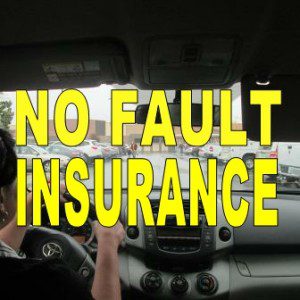
I was in a car accident. A guy pulled out from a stop sign in front of me. There was nothing I could do to avoid hitting him. Now his insurance company asks me all kinds of questions, whether I was speeding, texting, maintaining my brakes and more. I thought we had no-fault insurance, so why these questions?
Many states have passed one version or another of no fault laws. Half of them repealed those laws for various reasons including the fact that they were too complicated and did not live up to initial goals. Even in states with no fault auto insurance to this day, the concept of fault remains alive and well.
What is No Fault Insurance?
First, we need to know what no fault insurance covers. Lawmakers originally passed no fault insurance to reduce the number of car accident cases in the courts. The idea was to provide certain insurance benefits to those injured in car accidents regardless of fault.
For example, in Massachusetts those injured in car accidents qualify for up to $8,000 insurance payments covering wages and medical bills caused by a motor vehicle accident regardless of who was at fault in the accident. Different no fault states have different versions. The specifics of Massachusetts no fault are explained in a different blog article. click here.
Why it Matters Who is at Fault: Even in No Fault States.
But the concept of fault is alive and well in the courts and insurance companies. In the case of the question above, if the questioner lost wages and racked up medical bills, a certain amount of those losses would be awarded under the questioner’s own no fault provision, called ‘PIP’ or Personal Injury Protection.
But to obtain pain and suffering compensation, those injured in car accidents must claim against the “at-fault” driver’s insurance. This requires a finding of fault on the part of the other driver.
That other driver’s insurance company asks questions, even though their insured ran the stop sign looking to pass some of the blame back. If they can find even a bit of negligence on the other car, speeding, texting, failing to maintain brakes, they reduce their driver’s percentage of fault, thus reducing what they will pay the at fault driver for their damages.
So Why Do They Call It No Fault Insurance?
Fault even underlies no fault. After your own insurance company pays your medical bills and lost wages, even though you were not at fault, they then pursue the at-fault driver’s insurance company to get their money back. The process goes by the name of subrogation. This internal insurance industry process usually takes place by out of court agreement, arbitration or sometimes a lawsuit. The companies are going behind the back of “no fault” laws to force payment by the insurance company for the at-fault driver.
As of this writing, 12 U.S. states have versions of no fault insurance. A dozen more enacted and repealed no fault laws, largely because overall costs of the laws were higher in no fault states, contrary to the stated purpose of the laws.
For more on fault and why it still drives the legal system: click here.
Views: 0




